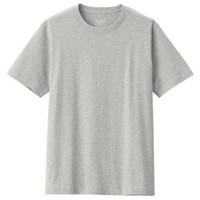Dyeing is a common clothing processing method that adds color to fabric to change its appearance and style. The following are common methods and pigment choices for garment dyeing:
1. Wash dyeing: Wash dyeing is one of the most common dyeing methods. It is suitable for most fabrics and can be dyed evenly by adding dye to water. During the dyeing process, the contact time between the fabric and the dye is longer, which can achieve deep dyeing effects. Commonly used washable dyeing pigments include dye powder, dye liquid, etc. You can choose the appropriate color and dye concentration.
2. Printing and dyeing: Printing and dyeing is the transfer of specific patterns or designs to fabrics through printing technology. Glue or ink is usually used as the pigment, and the pigment is printed onto the fabric with the aid of a stencil or etching agent. Printing can achieve a variety of unique patterns and effects, and is suitable for cotton, silk, linen and other fiber fabrics.
3. Jacquard dyeing: Jacquard dyeing refers to the formation of patterns or patterns on fabrics through material dyeing. This dyeing method usually uses dip-dye or spray techniques to deposit pigments in specific areas of the fabric to create patterns. Jacquard dyeing can give the surface of clothing a unique texture and three-dimensional effect.
4. Bleaching and dyeing: Bleaching and dyeing is a dyeing method that decolorizes or replaces the original color. The dyeing effect is achieved by using chemicals such as bleach or stain removers to remove or change the color on the fabric, and then adding new dye to the fabric. Bleaching and dyeing can achieve special effects such as gradients, patterns, and splicing.
When choosing dyeing pigments, you need to consider the following factors:
1. Fabric Type: Different types of fabrics have different absorbency and color fixation properties for dyes. For example, cotton fabrics absorb water-based dyes better, while silk absorbs acid dyes better. Therefore, when choosing dyes, you should choose a suitable dye according to the characteristics of the fabric.
2. Effect of use: The effect of dye use includes color uniformity, brightness, color fastness, etc. Dyeing results depend on the quality of the dye and its interaction with the fabric. When choosing a dye, consider the dyeing effect you want to achieve and choose a dye with a good quality guarantee.
3. Environmental friendliness: The selection of dyes should also consider their impact on the environment. Organic dyes are generally more environmentally friendly than synthetic dyes because they are often derived from natural plant extracts or insect secretions. Choosing dyes with higher environmental friendliness can reduce the negative impact on the environment.
In short, dyeing is a common clothing processing method. Different dyeing effects can be achieved through washing dyeing, printing dyeing, jacquard dyeing and other methods. When selecting dyes, factors such as fabric type, use effect, and environmental friendliness need to be considered to obtain ideal dyeing results.






